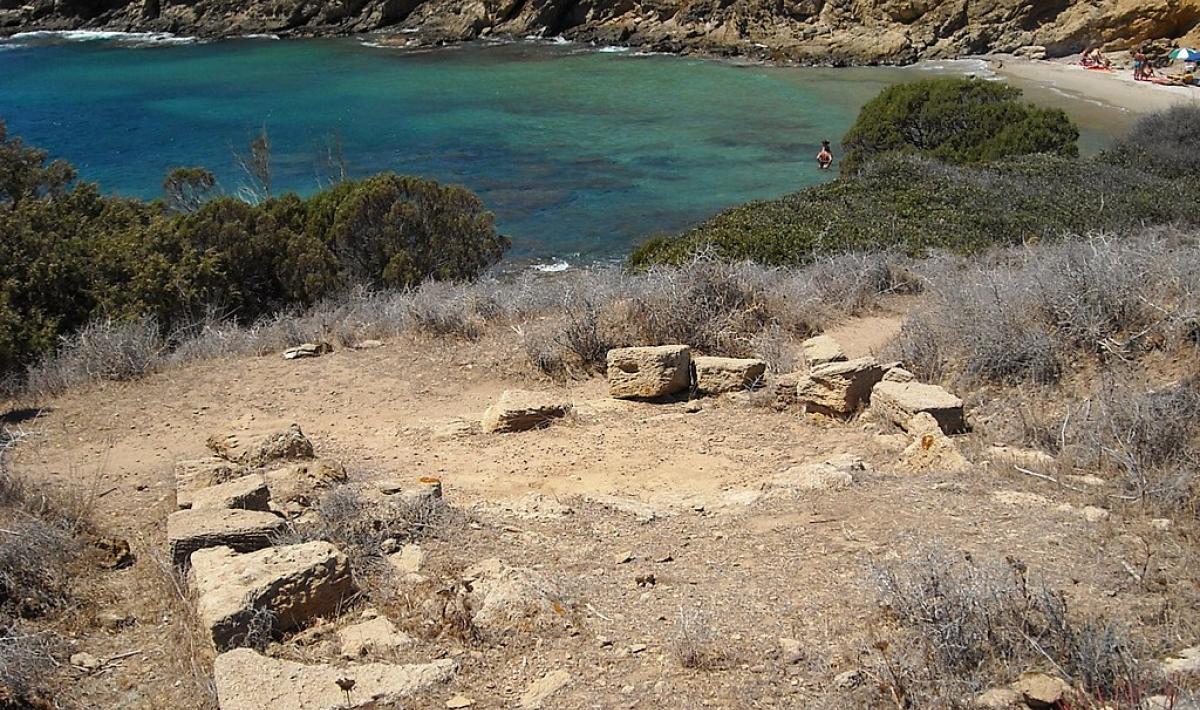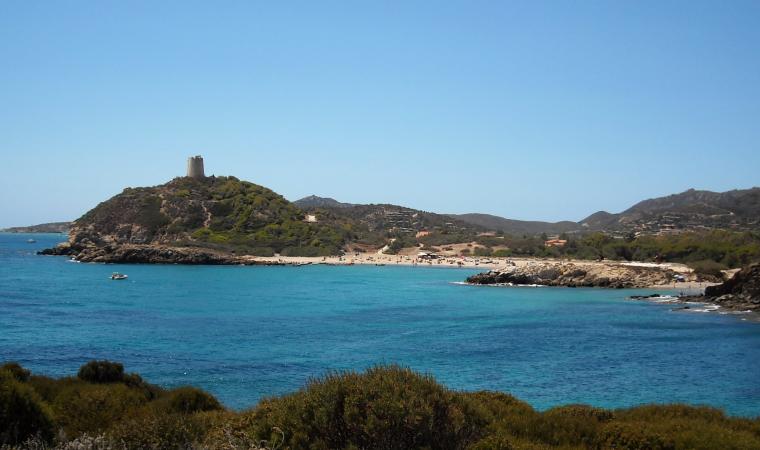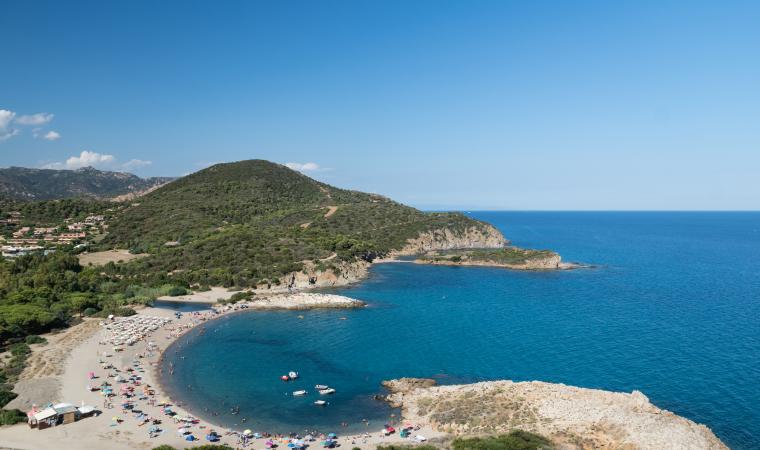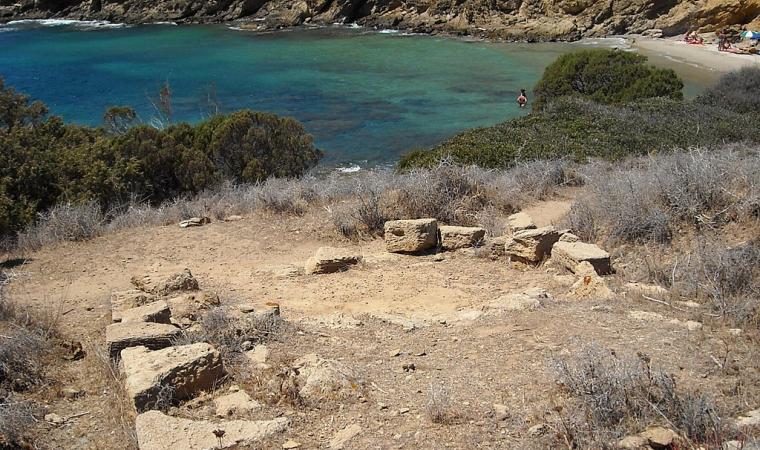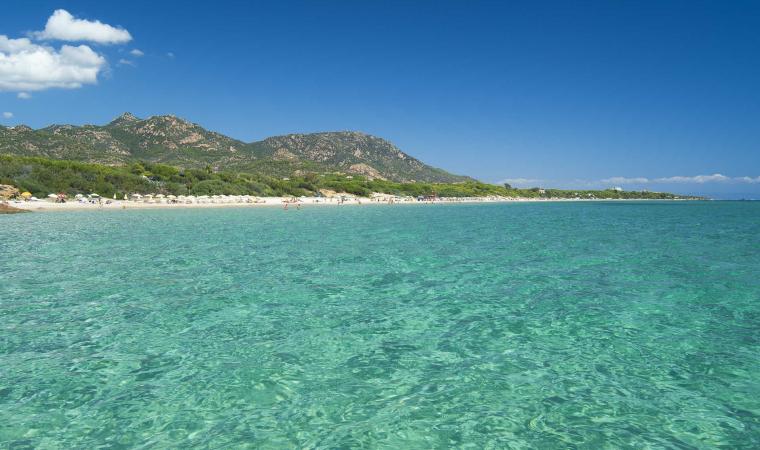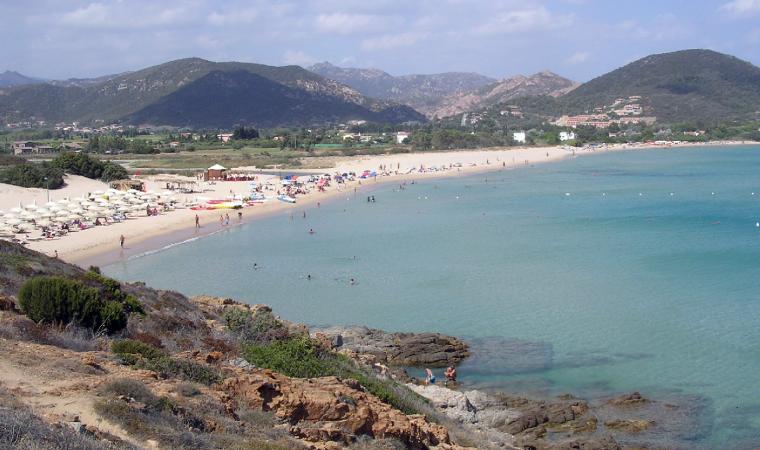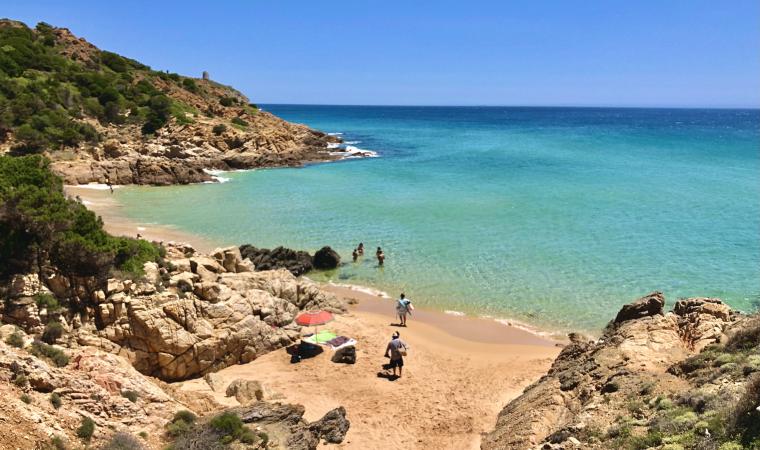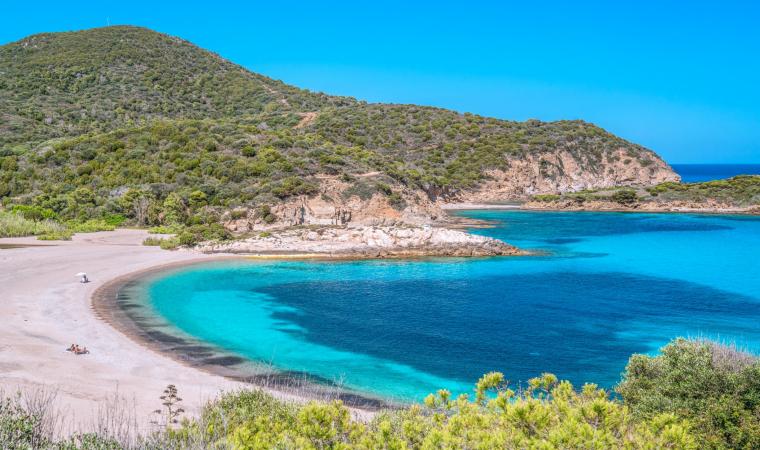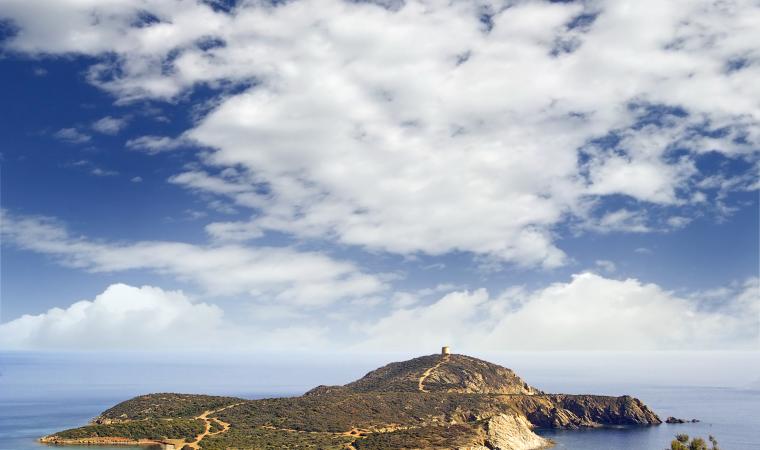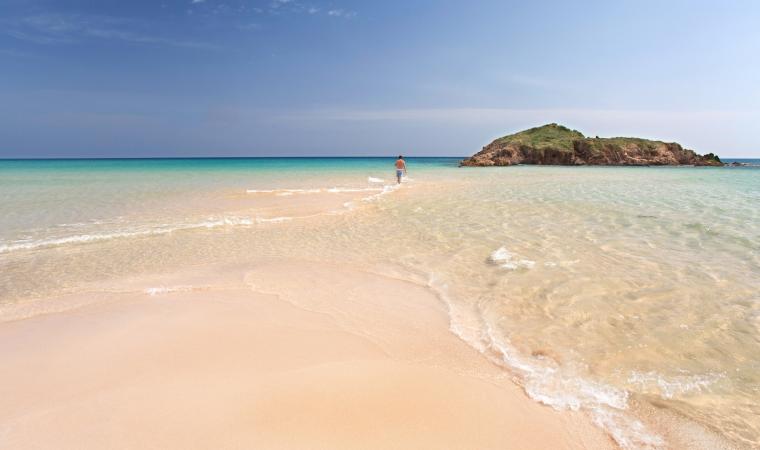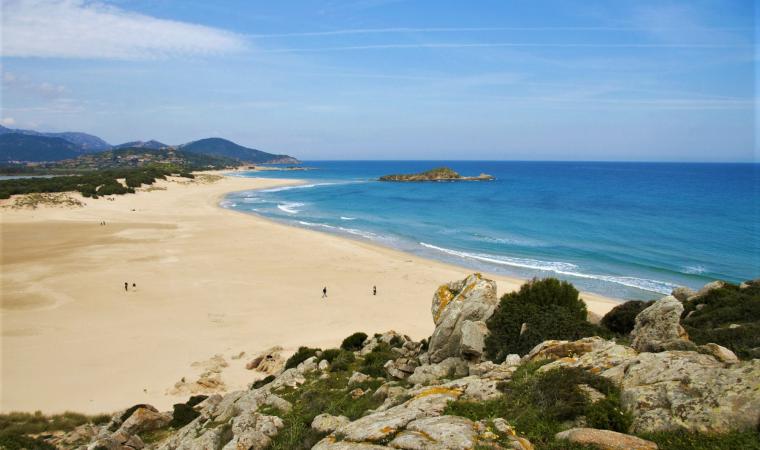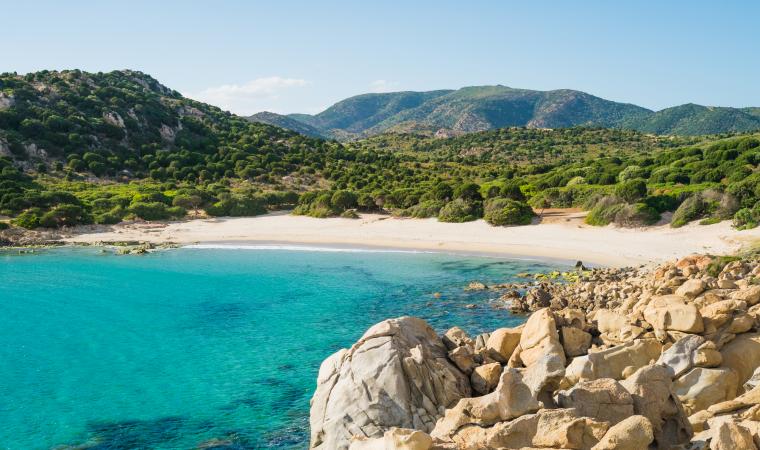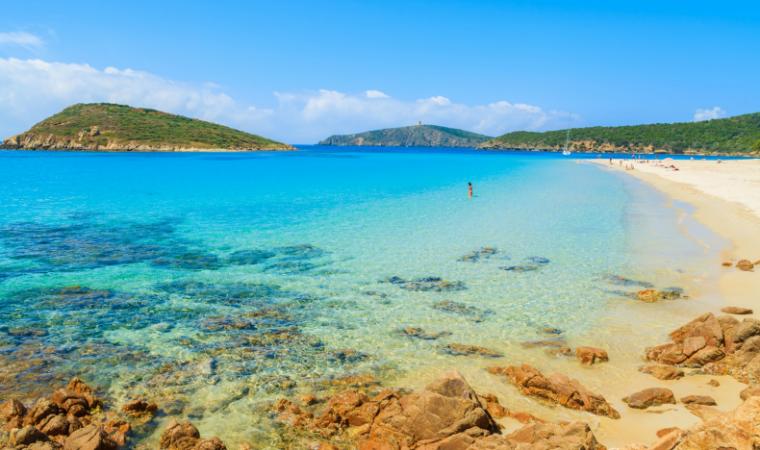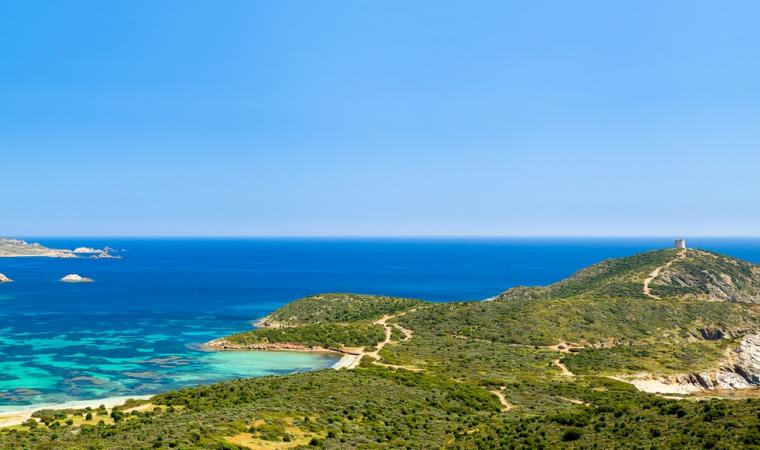At the foot of the promontory where the tower of Chia stands, built by the Spanish in the17th century to defend the coast from pirate incursions, there are ancient historical Sardinian ruins that slowly emerge from the sea. It was initially a coastal storm, in the nineteen-twenties, that revealed traces of a necropolis and, in the years that followed, several excavation campaigns made it possible to uncover the ruins of an ancient city, an archaeological legacy of inestimable value. A treasure forgotten for centuries, surrounded by a series of heavenly beaches, the ‘seven pearls’ of Chia, a renowned tourist resort that brings lustre to the Municipality of Domus de Maria.
A Neo-Punic inscription carved into one of the ruins recovered from the sea, identified as a sacred building, also provided history with the name of the mysterious site: Bithia. Today, we know that it was inhabited for over a thousand years, from the 8th-7th century BC to the 6th century AD, until, during the last phases of the Roman Empire, the ’unobstructed ’ pirate incursions in the western Mediterranean forced its inhabitants to take refuge inland. Until then, Bithia, which was built on a pre-existing Nuragic settlement, must have been a thriving harbour town, first Phoenician, then Punic and lastly Roman.
The architectural evidence of what must once have been a lively coastal town is partially hidden by the Mediterranean vegetation, which covers the slopes of the promontory where the town probably stood. Unlike the other Phoenician-Punic towns, like Nora and Tharros, Bithia continues to hide a great many secrets and, therefore, reconstructing its urban fabric is complicated. It may have included several agglomerations arranged around the only necropolis at the foot of the acropolis that, according to some, stood on top of the promontory of the tower. However, you will be able to observe the outlines of the walls and of the individual houses more clearly. The sacred, burial area dating back to the Phoenician period is also mysterious: according to some, it was a tophet, that is an open-air sanctuary, containing the incinerated remains of babies and children, placed inside ceramic urns. Much of the rest of the ancient city has been lost and some of its treasures are now abroad, while others have been relocated in Sardinian museums, such as the statue of the god Bes, on display at the national archaeological museum of Cagliari: it is more than a metre high, made of sandstone and perhaps represents a salvific divinity, to which the iconography of the Egyptian divinity was associated. Its original home, where the inscription showing the name of the town was also found, is now probably buried inside a private property, but it was studied during the excavation campaigns carried out in the 20th century and was identified as the temple of Bes.
If you want to delve deep into the history of Bithia, you can reach the site via the path, indicated in the Antonine Itinerary, which formerly connected the urban centre to the nearby town of Nora, today the archaeological park of Pula. The starting point is the little beach in the locality of Pinus Village. As you move along some stretches of the itinerary, you will notice the road with stone paving made of polygonal blocks. The view is spectacular: you will be walking close to the forest of is Cannoneris, along the coast, with numerous views of enchanting coves and elevations. Some of these, such as the mountain of sa Guardia, can be reached via detours on the path. You will then move alongside the islet of su Cardulinu, connected to the coast by a narrow strip of sand, on which what may have been a Phoenician tophet and another Punic temple were found. Lastly, you will reach the foot of the Aragonese tower.

